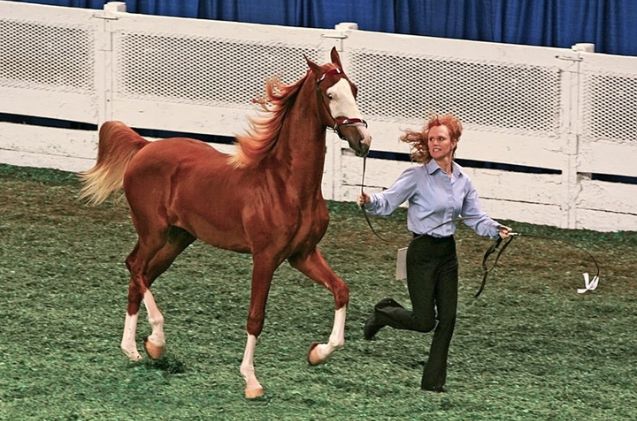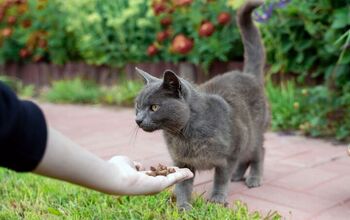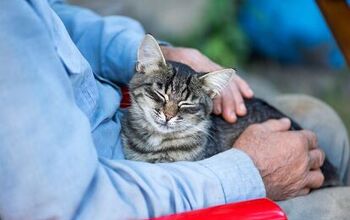Most Versatile Horse Breed

We often see equestrian sports and horse lovers divided into two camps – English and Western riding. But what about those riders that don’t fit into one or the other? If you have a more diverse interest in riding, you may wonder how to choose a horse for your needs. Are you forced to choose one style to focus on? Do you need to purchase a horse suited for each style? The good news is that some breeds are highly versatile and capable of being trained to perform in both styles skillfully. Here is our list of the 10 most versatile horse breeds to help you find your ideal riding partner.
American Quarter Horse
Recognized as the most popular horse breed, the American Quarter Horse offers a wide variety of highly sought-after traits. This includes their speed, agility, loyalty, and beauty. You will see Quarter Horses performing in horse racing, working as ranch horses, and being loved on as family pets. It’s this versatility that helped to skyrocket their popularity. They are sure-footed and dependable, comfortably navigating different terrains and situations. You can find the American Quarter Horse in a wide assortment of solid colors, with the most common being a brownish-red sorrel. They often have white markings on their legs or face.
Percheron
A larger and more powerful draft horse, many may take one look at their broad, muscular build and assume that it will limit their performance ability. But this couldn’t be further from the truth. The Percheron was first developed in France, where it was bred to perform as a war horse. They are a common choice for pulling sleighs or carriages, but their strength is only one of their many positive traits. This intelligent and highly trainable breed is an excellent choice for riders of all ages and skill levels. They can be ridden comfortably in either style and have made a name for themselves in the dressage ring.
Clydesdale
One of the tallest breeds of horse, the Clydesdale is recognizable to most people due to its starring role in the Budweiser Super Bowl ads. They were initially used for heavy hauling, which they still dominate today. But that’s not the only use for these beautiful, feathery-footed horse breed. Most farmers and ranchers have replaced their Clydesdales with machinery. However, you will still see them hauling equipment occasionally for ceremonial or show reasons. But, their agility, calmness, and strength allow them to excel in parades, trail riding, pleasure riding, and therapy positions.
American Paint Horse
With their characteristic pinto spotting pattern of white and darker colors, the American Paint Horse is always a showstopper. They have a bloodline that includes both Quarter Horse and Thoroughbred, resulting in a breed with speed, strength, stamina, and agility. In addition to these high-performing traits, the American Paint Horse is calm, intelligent, and friendly. They can be seen in various equestrian activities, including barrel racing, trail riding, show jumping, combined driving, and reining. But they are also a fantastic choice for pleasure riding or a four-legged companion.
Morgan
The Morgan horse is loved for its eager and cooperative temperament, making them a smart choice for riders of all ages and skill levels. They are especially popular for beginners and children. But don’t let their gentle personality steer you wrong. The Morgan is also an athletic powerhouse that has made its mark in most equestrian competitions and events, including dressage, show jumping, driving, endurance riding, and cutting. They are also an excellent option for pleasure riding and participate in many therapeutic riding programs across the country. While you can find Morgans in nearly any color, they are most commonly dark colors such as black, bay, and chestnut.
Arabian
Many of today’s popular horse breeds can trace their bloodline back to the Arabian. With their highly prized athleticism and endurance, this breed can often be found in endurance riding and long-distance trail competitions. But their spirit and intelligence allow them to excel in anything they do. They can be seen in several colors, including black, chestnut, roan, gray, and bay. Their skin is black in color except for under any white markings. This can be traced back to their ancestors on the Arabian Peninsula, where it provided them with much-needed protection against the desert sun.
Thoroughbred
This spirited horse was undeniably bred for speed, allowing them to dominate the horse racing world. Thoroughbreds can reach impressive speeds of approximately 40 miles per hour. They have a bold personality that can be a challenge for many riders. But if you can handle its dynamic temperament, the Thoroughbred is a high-performing horse that will excel in many equestrian sports, including dressage and show jumping. After retiring from the racing world, many Thoroughbreds will settle into life as trail or pleasure-riding horses.
American Saddlebred
A true American horse, the American Saddlebred originated as a cross between the Thoroughbred and the now-extinct Narragansett Pacer. This resulted in a high-performing horse with speed, strength, and the prized rolling gait of the Pacer. The American Saddlebred is a highly adaptable breed that can be seen in many equestrian sports and activities, including hunt competitions, combined driving, dressage, show jumping, and competitive trail riding. They offer a smooth ride that can be comfortable for those riding for extended periods. You may also spot the American Saddlebred on television, having starred in many movies and TV shows.
Appaloosa
Like the American Paint Horse, the Appaloosa is best known for its unique coat pattern. However, solid-colored Appaloosas are also recognized as long as they still possess the characteristic mottled pattern on their skin. The breed is gentle and friendly, making them a great choice for a companion horse or pleasure riding. They are also highly trainable and eager to please. While they were initially bred for transport, battle, and hunting, the modern Appaloosa can be seen in many Western and English riding sports, including rodeo events, long-distance trail riding, and racing.
Paso Fino
With a beautiful appearance and smooth gait, the Paso Fino is a popular horse in the show ring. It’s a natural gait that can be seen even in young foals. But this isn’t the only place where the breed excels. They offer a gentle and comfortable ride that makes them an excellent option for riders suffering back pain or other injuries. Today, you will find the Paso Fino participating in competitive trail riding, mounted shooting, parade performances, drill team competitions, driving, and gymkhana. They can be found in almost any coat color.
What Are the Best Horses for First-Time Riders?
No one horse breed is the best for beginners. However, some breeds are calmer and more forgiving of those who aren’t as experienced. Horses with a more easygoing temperament are often better suited for first-time riders, including the American Quarter Horse, American Pain Horse, and Morgan. But every horse is an individual. Never assume a horse will behave a specific way due to their breed. Instead, ask many questions to better understand the horse you are considering.
How Do I Pick My First Horse?
Are you searching for your first horse? If so, it can be a stressful time. A horse is a significant investment to make. If you are connected with a trainer or another professional, you can leverage their knowledge and expertise to help you assess your options. An older, more seasoned horse may be a better option for your first purchase. You can go into the decision with a full understanding of the personality, and they have likely already undergone considerable training. This means that you can enjoy riding with your horse safely much sooner.
How Can I Assess a Horse’s Temperament?
We often hear people talking about a horse’s temperament and how it can impact the riding experience. A bold or spirited horse may have the determination for competitive riding, but they are often more challenging to handle. These horses are better suited to an experienced rider who is up to the task. On the other end of the spectrum, a gentle, kind horse doesn’t always have the drive you are looking for. They may be more comfortable in a companion or pleasure-riding role where they can enjoy the time spent with their handler.
Many methods of testing and assessing a horse’s temperament are being used. Each has its own benefits and inconsistencies. An open field test involves a horse being placed in a designated area with no human influence and monitored to assess their natural response. Questionnaires are a highly effective option that consists of asking the horse’s handlers a series of questions. They have first-hand experience and can provide insight often missed with outside testing. Some researchers even believe that a hair whorl at the center of a horse or cow’s eyes can indicate temperament.
When possible, we recommend speaking to the previous owner or handler of any horse you are interested in. But keep in mind that some behaviors can develop or emerge later in life.
How Can I Help my Horse Adjust to its New Home?
When bringing your new horse home, try to be patient with them. Everything they know has changed, and adjusting to the new surroundings will take time. Take some time to hand walk your horse around the property, allowing them to explore everything safely. If your horse is experiencing high anxiety, contact your veterinarian. They may be able to recommend a calming supplement to help. For a natural option, magnesium has calming properties and can be fed as a pellet long-term.

Britt Kascjak is a proud pet mom, sharing her heart (and her home) with her “pack” which includes her husband John, their 2 dogs – Lucifer and Willow – and their 2 cats – Pippen and Jinx. She has been active in the animal rescue community for over 15 years, volunteering, fostering and advocating for organizations across Canada and the US. In her free time, she enjoys traveling around the country camping, hiking, and canoeing with her pets.
More by Britt

































